Meade 12" LX600 Checkout and First Light
Posted: 18 February 2016
|
Open: Wednesday, 17 February 2016, 1512 MST Temperature: 93°F |
Session: 920 Conditions: Clear, breezy |
I moved the boxes containing the Meade 12" LX600 OTA (optical tube assembly), StarLock refractor telescope, and mount, the LX600 tripod, and the Meade AC Adapter to the observatory. I used a dolly to move the large boxes to the observatory patio from the garage where they had been after arrival:
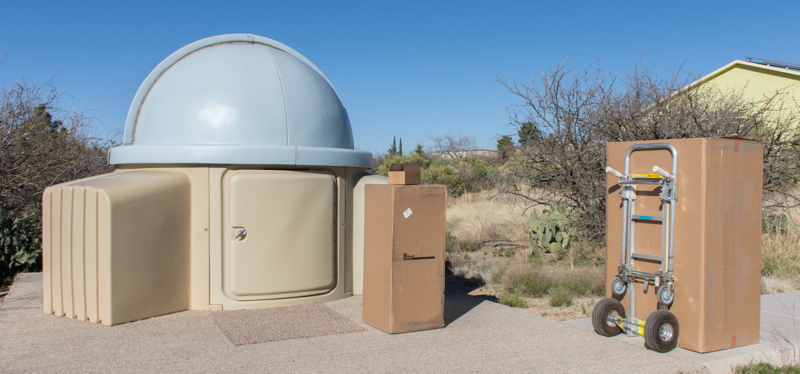
Once everything had been moved I opened the tripod box first. I had decided to do the initial checkout with the 12" LX600 on the patio as that would allow the most freedom of movement (me and the telescope) to ensure that all functions were working normally. But first I wanted to see how much room the tripod legs would take inside the POD, so I placed the tripod inside the observatory:
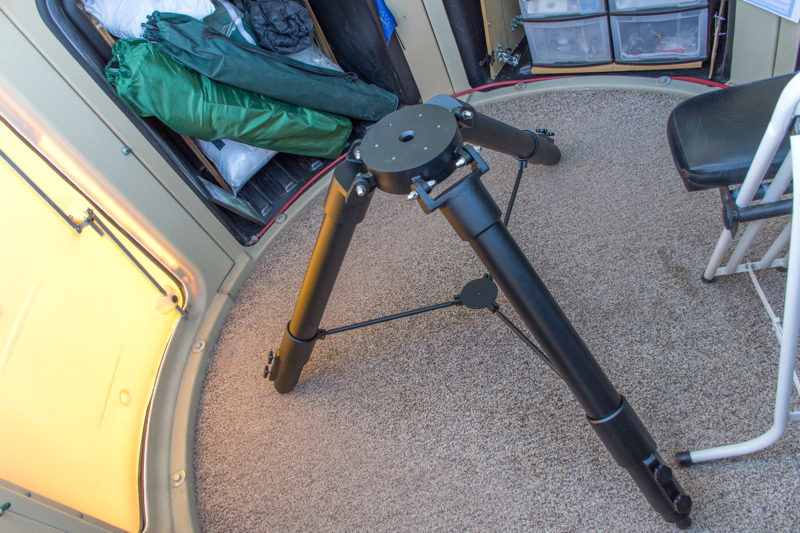
The fit was better than I had expected, with adequate walking space between the legs and the POD walls. (But I still plan to get a pier.)
I then moved the tripod back to the patio and began unpacking the telescope.
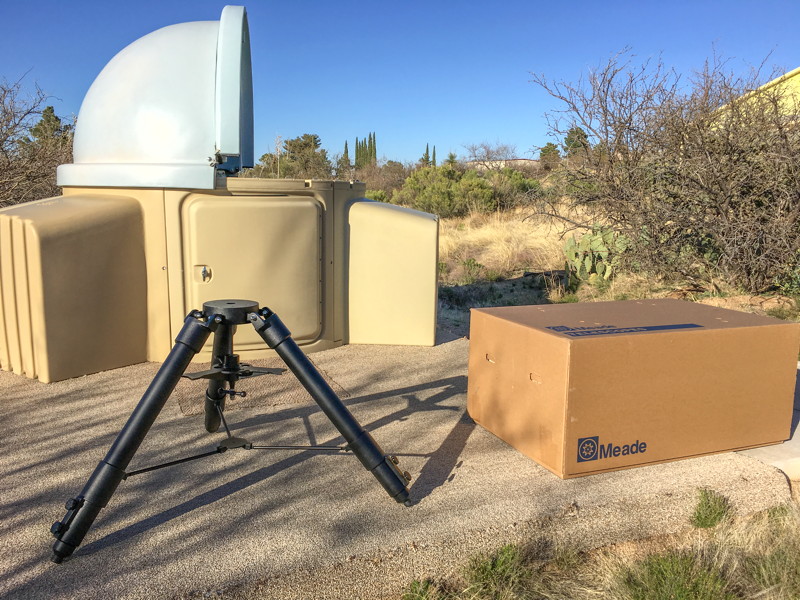
There were lot of parts inside the big box:
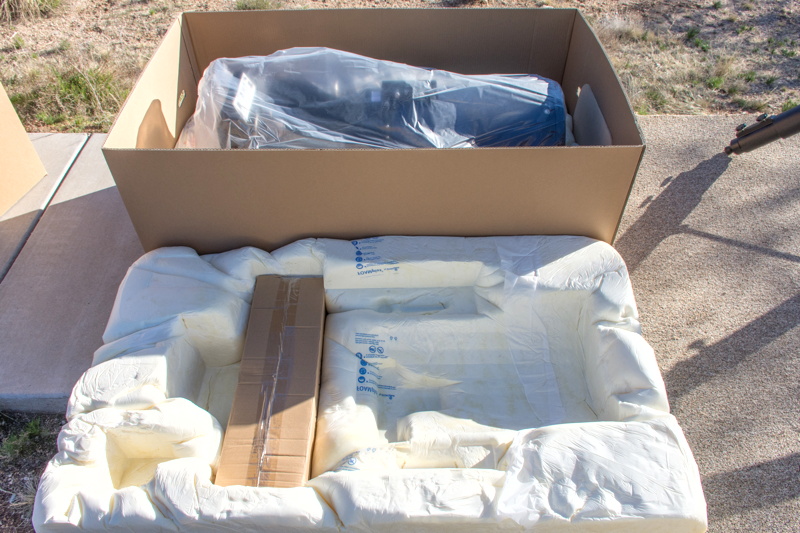
The fork arms on the LX600 can be split to allow easier lifting of the OTA. Unfortunately, Meade ships the telescope with the fork arms connected, so it was a challenge for one person (me) to remove the telescope from the box in order to unscrew the eight bolts holding the fork arms together. Once the fork arms were split I placed the base on the tripod:

I then mounted the OTA on the base and rebolted the fork arms. Yes, I could lift the 12" OTA without any assistance, although it was not easy. I completed the telescope assembly as the sun was setting. Here is the 12" LX600 telescope set up in Alt/Az configuration for the night's checkout and First Light:
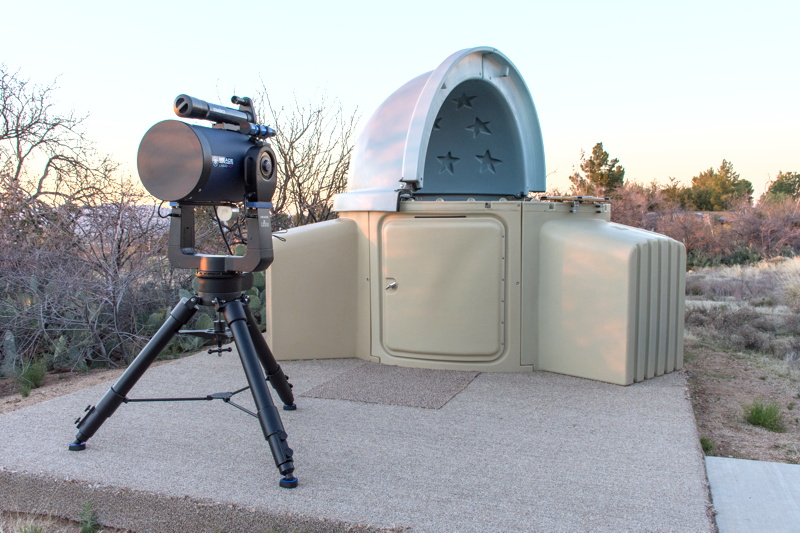
I took a short rest break after moving the empty boxes back to the garage. I returned to the observatory at 1840 MST. I connected the AC adapter to the observatory electricity after getting a long extension cord from the garage.
12" f/8 LX600 FIRST LIGHT!
1900 MST: powered on the telescope. I went through the initial AutoStar II power on steps and did an Auto Align. It slewed to the star Sirius. The star was placed just outside the included Meade Series 4000 1.25" 26mm eyepiece (94X) field-of-view (FOV). I centered the star in the eyepiece and focused the telescope. FIRST LIGHT! Optical collimation was excellent. The second star was centered, completing the Auto Align. I slewed the telescope back to Sirius to align the 8x50 finderscope. The StarLock guiding refractor telescope centered the star and began tracking it. The operation seemed to be OK. Sirius was not quite centered in the 26mm eyepiece FOV. (The StarLock can be set to use an offset so that objects are centered. However, I elected to wait on that until I have the telescope in the observatory and mounted on the X-Wedge.)
Did a GOTO M42 (Orion Nebula) and viewed it at 94X. Lovely view with lots of nebulosity visible even with the waxing gibbous Moon nearby. Stars were crisp. Next, viewed M31 (Andromeda Galaxy) and its companion galaxies M32 and M110. M110 was visible against the bright moonlit sky. Next was M76 (Little Dumbbell Nebula, planetary nebula), 94X. That was followed by the Double Cluster (open star clusters). The StarLock system performed flawlessly doing these visual tests.
I then stepped through the AutoStar II settings and configured them as I wanted them. At some point during these configuration steps I apparently inadvertantly messed up the AutoStar alignment. I decided this was a good point to do a TRAIN DRIVES on a distant terrestrial object. I used an illuminated reticle eyepiece on the telescope to assist in the TRAIN DRIVES. These would be the last configuration steps I would do until the telescope is set up on the X-Wedge inside the observatory.
I cycled the telescope power and did an Auto Align. Once that was completed I did a GOTO the star Castor (double star). Then did a GOTO the Moon. The entire lunar disk was not all visible in the 26mm eyepiece (94X) FOV. (I will test my new Optec focal reducer on a future session.) The view of the Moon was stunning, with a sharpness I had not seen with my 8" LX200-ACF (and it had provided excellent views).
I mounted the Nikon D7200 DSLR at prime focus and did some quick lunar imaging:
1/320sec, ISO 400
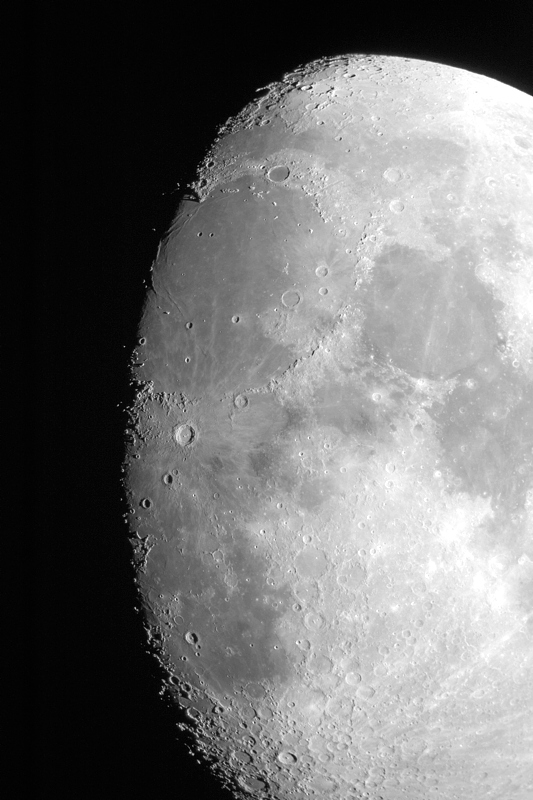
1/250sec, ISO 400

To give you an idea of the excellent optical quality of the f/8 12" LX600, this image of Copernicus was cropped from the original full-frame photo at the top:
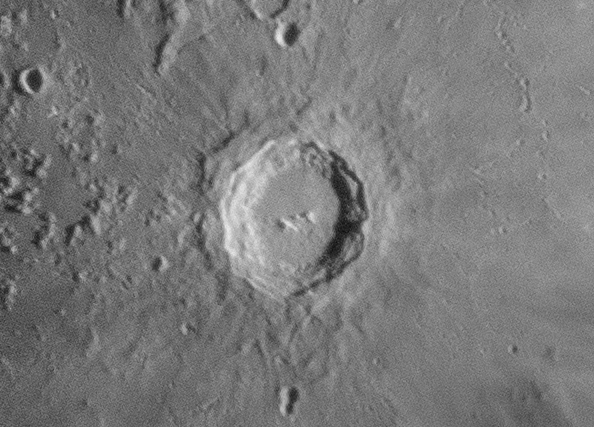
I then did some lunar observing using a Meade Series 5000 5.5mm eyepiece (yielding 443X). The views were awesome, especially the craters Copernicus, Tycho, and Clavius.
2041 MST: Jupiter had now risen just above the hill to the east. Did a GOTO Jupiter and viewed it at 94X. The view was not great due the low altitude in the sky but the four Galilean Moons were visible.
2046 MST: after this long day and night of set up and a very enjoyable and successful First Light, I was getting tired. Knowing it would take some time to disassemble the LX600, I powered off the telescope and began the disassembly. I removed the OTA and base from the tripod and moved everything inside the POD:
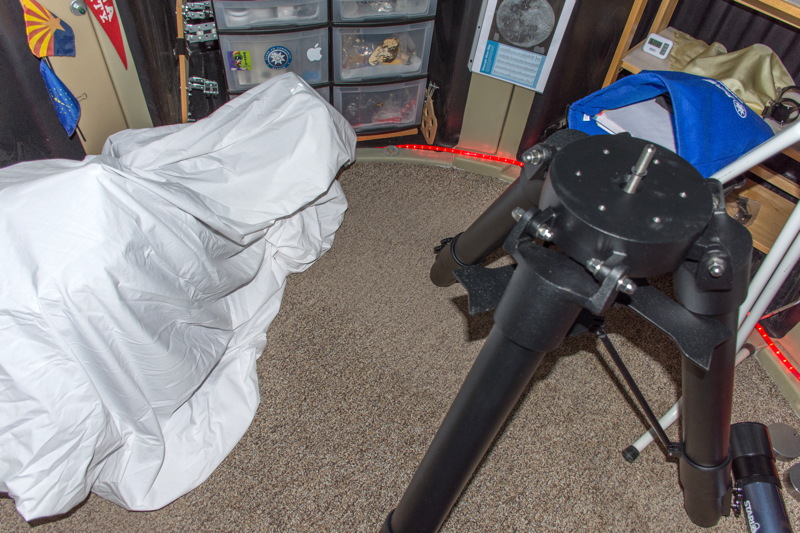
I plan to set up the telescope on the X-Wedge inside the observatory Thursday morning, 18 February.
|
Close: Wednesday, 17 February 2016, 2150 MST Temperature: 61°F |
Session Length: 6h 38m Conditions: Clear |
Comments are welcome using Email. If you are on Twitter you can use the button below to tweet this report to your followers. Thanks.
Cassiopeia Observatory Home Page
Copyright ©2016 Michael L. Weasner / mweasner@me.com
URL = http://www.weasner.com/co/Reports/2016/02/18/index.html
